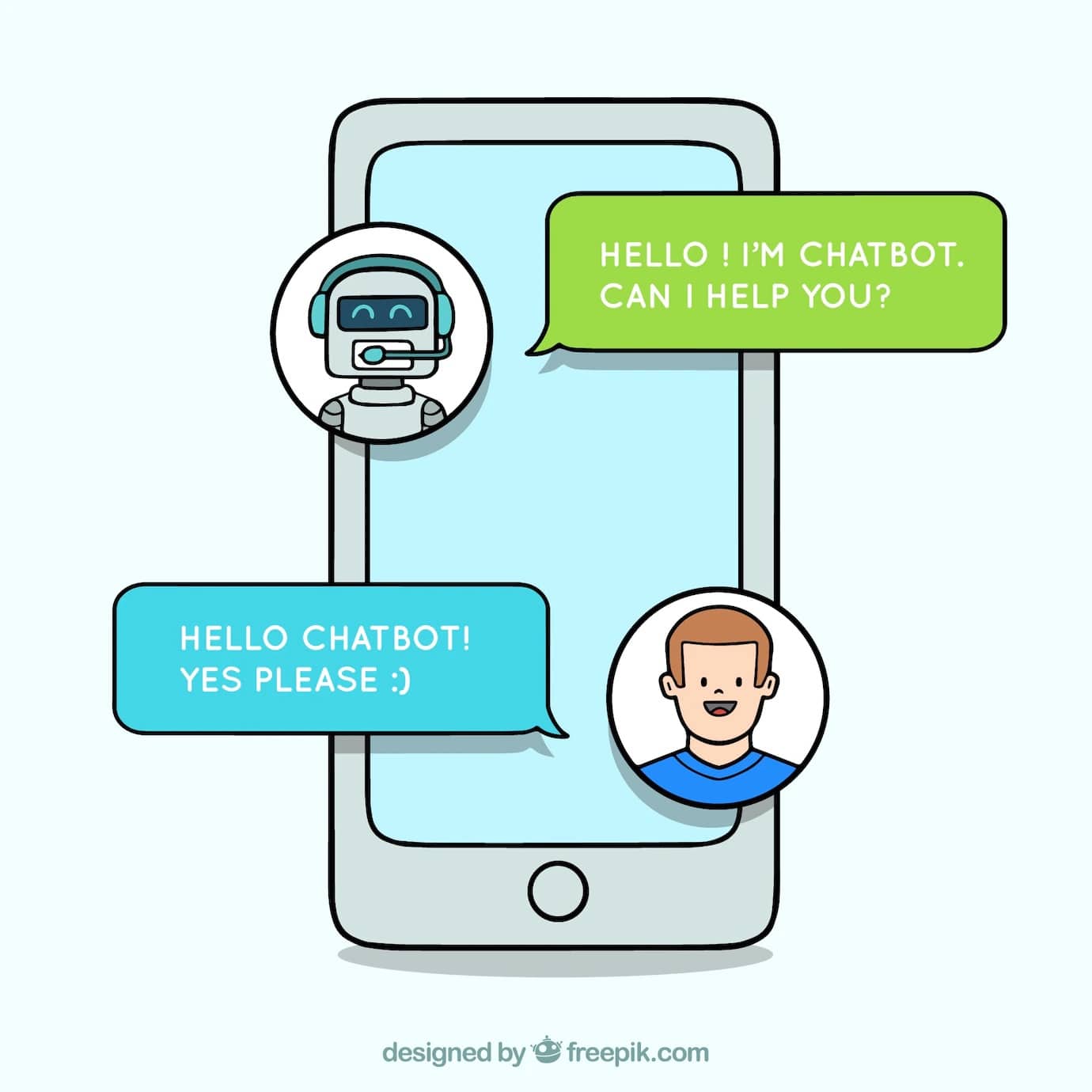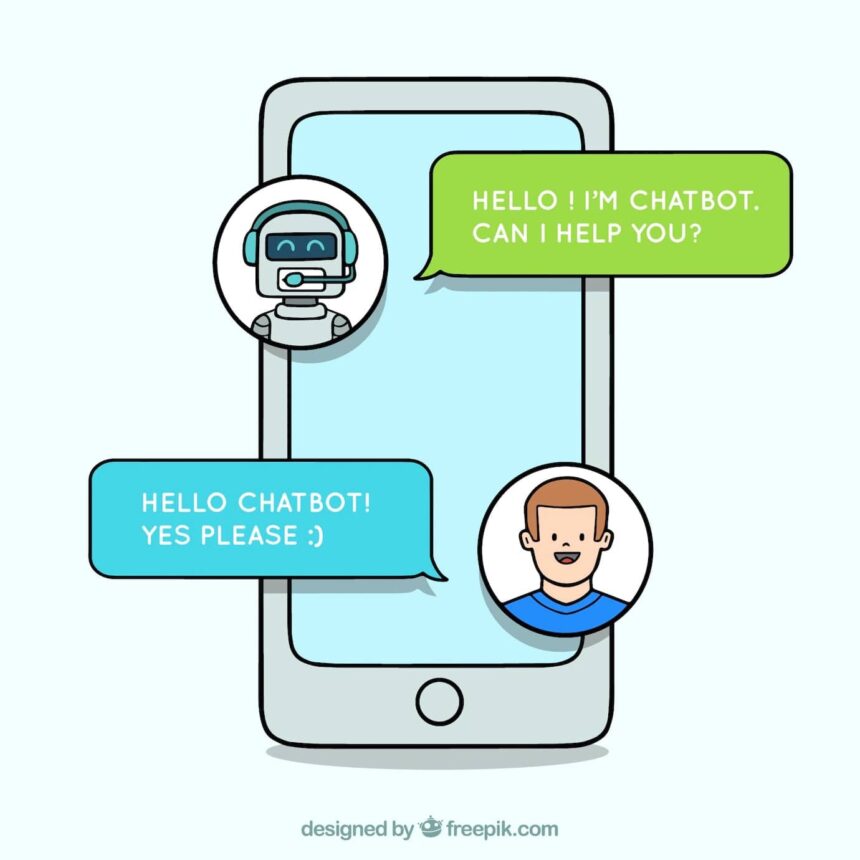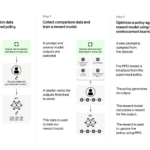
Introduction
Robotics and artificial intelligence (AI) are two of the most fascinating and fast-growing fields in computer science today. With the rapid expansion of these technologies, chatbots have become one of the most widely used applications of AI.
A chatbot is a computer program that can simulate a human conversation. Chatbots are designed to help humans communicate with computers, and they are used in a variety of tasks, including customer service, marketing, and even entertainment.
Chatbots inherently not intelligent, they follow a set of commands to share information being asked for. Four essential features make the chatbots intelligent and these features are contextual understanding, perpetual learning, seamless agent handover, and voice technology.
Making chatbots intelligent is one of the difficulties. Here, we’ll look at some of the strategies utilized to make chatbots smarter and more efficient.
Table of contents
Also Read: How to Make an AI Chatbot – No Code Required.
The Main Approaches
Intelligent chatbots are those that can understand human language and provide relevant responses. There are a few different approaches that can be used to make chatbots intelligent.
One approach is to use natural language processing (NLP). NLP is a field of computer science that deals with the understanding and manipulation of human language.
NLP can be used to make chatbots that can understand human conversations. NLP is used to process and interpret human language. It can be used to understand the meaning of words, identify the topic of a conversation, and determine the appropriate response to a question.
Artificial intelligence can also be obtained through machine learning. Machine learning is concerned with the engineering and implementation of algorithms that may learn from data. Machine learning can be used to make chatbots that can learn from previous conversations and provide customer service.
Deep learning is a type of machine learning that is concerned with the implementation of algorithms that may learn from data. This data can be obtained from a variety of sources, including real human conversations. Deep learning can be used to make chatbots that can understand human language and provide interactive voice responses.
Deep learning algorithms are based on artificial neural networks. Neural networks are inspired by the structure of the human brain. They are composed of a series of interconnected units called neurons. Neural networks are the most powerful type of machine learning algorithm and are capable of learning from data.
Also Read: What is NLP?
Challenges of the Process
Contextual Understanding
One of the challenges in making chatbots is making them understand the context of a conversation. Contextual understanding is the ability of a chatbot to understand the meaning of a conversation.
Contextual understanding is important because it allows chatbots to determine the appropriate response to a question. There are a few different methods that can be used to develop contextual understanding:
- One method is to use a knowledge base. A knowledge base is a database of information that can be used to make chatbots understand the context of a conversation.
- Another method is to use conversation history. Conversation history is the record of previous conversations that a chatbot has had with humans. This record can be used to make chatbots understand the context of a conversation.
- Lastly, contextual understanding can be obtained through human agents. Human agents are humans that provide customer service through chatbots. They can be used to make chatbots understand the context of a conversation and provide relevant responses.
Perpetual Learning
Another challenge in making chatbots intelligent is that they need to be able to learn. Learning is the process of acquiring new knowledge or skills. And since chatbots work on certain algorithms, they can’t simply download or copy the newest information.
Perpetual learning is important for chatbots because they need to be able to learn from data. They need to understand new and updated human language to keep up with a conversation and understand customer inquiries.
To make robots learn new things on their own, engineers use a process called reinforcement learning. In reinforcement learning, a chatbot is given a task to complete. The chatbot is then rewarded for completing the task. This reward can be in the form of a new piece of information or a new skill. The rewards are used to reinforce the behaviors that the chatbot needs to learn.
Seamless Agent Handover
A challenge that arises when making chatbots is the seamless handover of a conversation from a chatbot to a human agent. Seamless handover is the ability of a chatbot to transfer a conversation to a human agent without interrupting the flow of the conversation.
Seamless handover is important because it allows for customer service to be provided more efficiently. When a chatbot is unable to answer a question, it can seamlessly transfer the conversation to a human agent. This allows for the human agent to provide a more personalized response.
It can be easily achieved through the use of an interactive voice response system. It will recognize when the chatbot is unable to answer a question and will transfer the conversation to a human agent.
Voice Technology
Voice technology is another aspect that is important for chatbots. Voice technology is the use of voice to provide customer service.
Voice technology is important because it allows for more natural interaction between humans and chatbots. When humans speak to a chatbot, they expect the chatbot to understand them. This can be achieved through the use of voice recognition.
Voice recognition is done through the use of algorithms that analyze human speech. Once the speech is analyzed, the chatbot can then respond accordingly. There are many types of voice recognition software that are used to make chatbots.
Also Read: Role of Voice AI in Contact Center Transformation.
A Very Brief History Of Chatbots
The history of chatbots can be traced back to the early days of computing.
- In 1951, a program called ELIZA was developed. ELIZA was one of the first chatbots ever created and was designed to mimic human conversation. ELIZA was not very intelligent. It could only respond to pre-defined questions. However, it was still able to hold a conversation with humans.
- In 1966, another chatbot called PARRY was developed. PARRY was designed to simulate human paranoid schizophrenia. PARRY was more intelligent than ELIZA. It could understand more complex questions.
- In 1974, a chatbot called Mycin was developed. Mycin was designed to help humans diagnose diseases. Mycin helped humans by asking questions and then providing health status.
- In 1997, A.L.I.C.E was developed. A.L.I.C.E was designed to hold a conversation with humans. It worked by giving pre-scripted responses to questions.
- The first commercially available chatbot was Jabberwacky. Jabberwacky was released in 1988. It was designed to entertain humans through conversation.
- In 2000, SmarterChild was released. SmarterChild was an instant messaging chatbot. It could hold conversations and also perform tasks such as playing games, providing weather information, and searching the internet.
- In 2011, Apple’s Siri was released and there was an explosion in the development of chatbots. Chatbots have become more intelligent and are now used in a variety of different domains. Some prominent chatbots of the 21st century include Google Assistant, Amazon Alexa, and Microsoft Cortana.
Defining A Chatbot’s Intelligence
The intelligence of a chatbot can be defined in terms of its ability to understand a human conversation and respond accordingly.
Chatbots are equipped with natural language processing capabilities. Natural language processing is the ability of a computer to understand human language. This is done through the use of algorithms that analyze and process human speech. Once the speech is analyzed, the chatbot can then respond accordingly. The response of the chatbot can be in the form of text or speech.
However, the ability of a chatbot to understand human conversation is not enough. The chatbot must also be able to generate a response that is appropriate for the context of the conversation. This ability of the chatbot to generate an appropriate response is what makes a chatbot intelligent.
So Are All Chatbots Intelligent?
No, not all chatbots are intelligent. Many chatbots are not very intelligent. These chatbots are not able to hold a conversation with humans. They can only respond to pre-defined questions.
There are three main types of chatbots: rule-based chatbots, predictive chatbots, and generative chatbots.
- Rule-based chatbots are the basic chatbots. They are based on a set of rules that determine the response of the chatbot.
- Predictive chatbots are more complex than rule-based chatbots. They use artificial intelligence to learn from past interactions and make predictions about future interactions.
- Generative chatbots are the most complex type of chatbot. They use artificial intelligence to generate responses from scratch.
A New Paradigm For Discussing The Intelligence Of Chatbots
Generative systems are a new paradigm for discussing the intelligence of chatbots. Generative systems generate responses from scratch. This is in contrast to basic systems that rely on pre-existing responses.
Generative systems are more flexible and can handle a wider range of inputs. They can also generate more natural-sounding responses. Neural networks are a type of generative system. Neural network architectures are composed of interconnected nodes. These nodes are similar to neurons in the brain.
Neural networks are capable of learning from data. They can learn to recognize patterns and make predictions. These are conversational agents that generate a natural language component.
The Ownership Perspective
The intelligence of a chatbot can be seen from two perspectives: the user’s perspective and the chatbot designer’s perspective.
From the user’s perspective, a chatbot is intelligent if it can understand the user’s queries and provide relevant responses. A chatbot that can hold a conversation with a human is considered a promising chatbot.
From the chatbot designer’s perspective, a chatbot is intelligent if it can accomplish the task it was designed for. A chatbot that can generate qualified leads and work through business processes is considered a successful chatbot.
Intelligent Platforms As Intelligent Agents
Intelligent platforms are software systems that provide artificial intelligence capabilities. These platforms can be used to develop chatbots. Some of the most popular intelligent platforms include Google Dialogflow, Amazon Lex, and IBM Watson.
These platforms provide natural language processing capabilities. They also provide tools for building conversational agents. The English language model is the most common type of model used by these platforms. The English language model is a set of rules that define how the chatbot should respond to user input.
Why is the “Intelligent Platforms” Perspective Important?
The intelligent platforms perspective is important because it shows how chatbots can be used to accomplish tasks. It helps chatbots work in real-time and scale to handle human interactions.
The intelligent platforms perspective is also important because it provides a way to measure the success of chatbots. The number of qualified leads and the satisfaction of customers are two ways to measure the success of a chatbot.
Chatbots that are designed to generate leads or work through business processes are more successful than chatbots that are not designed for a specific task.
Also Read: Has Any AI Passed the Turing Test?
Final Thoughts
Chatbots are a promising technology that will become more and more common in the future. They will be used to automate tasks and save businesses time and money. With the right design, chatbots can provide a great user experience. There are many challenges, but with the right algorithms and architectures, chatbots can work without human intervention.











